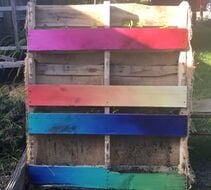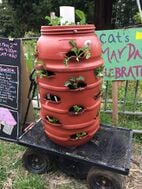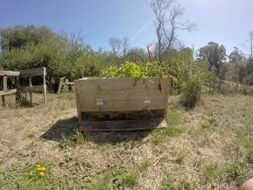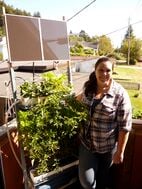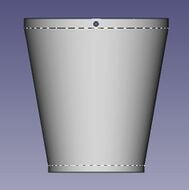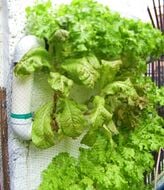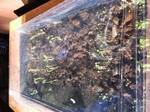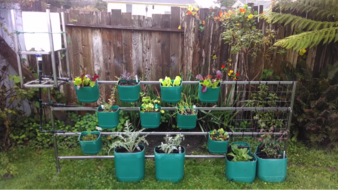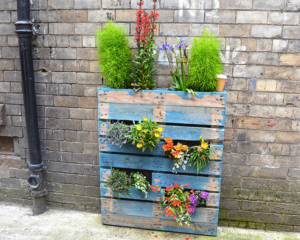
A vertical garden is an indoor/outdoor modular planter with multiple levels of vertically spaced pots or planters. Its vertical design saves space and water. With a flow through irrigation system, water from the top plants passes to all the lower pots. Different sizes of rack can be used to fit the gardener's needs. It can be tall with five levels of plants for a larger garden, or it can be built lower to the ground and longer. Using the vertical space instead of horizontal space is an important feature for those short of planting area in condos, or apartments with small balconies.
Bag gardens
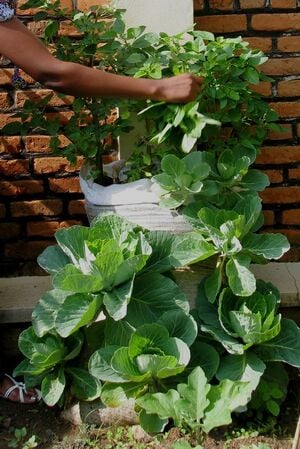
Bag/Sack gardens, also known as "vertical farms or gardens", are tall sacks filled with soil from which plant life grows. This concept for a small, portable garden is good for areas where the gardener may have to continually relocate, as well as for areas where there is little or no healthy soil (as the soil in the bag is contained). Due to their vertical nature, sack gardens are also fairly efficient in terms of using water.
Most of the initiatives and projects concerning sack gardens have been or are being conducted in the slums of Nairobi, Kenya, where the lack of appropriate farm land combined with the very low incomes and employment rates of families and individuals, as well as natural disasters such as landslides, result in very poor food security.
Several initiatives aimed at providing and training in the use of these sack gardens have reported high levels of success in terms of improving nutrition, food security, and income.
One has to note that sack gardens, although suitable for areas with traditional gardening challenges, can hardly compete with conventional kitchen gardens when they are feasible.
The term "sack garden" is sometimes also used to describe horizontal bag gardens, which are simply bags laid on one side with their other side cut open, so that the bag functions like a pot or trough.
Green walls
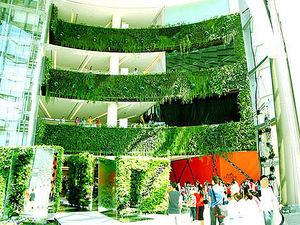
A green wall is a wall, that is partially or completely covered with vegetation and, in some cases, also with soil or an inorganic growing medium. The wall can be either free-standing or part of a building. There are two main types of green walls: green façades and living walls. Green façades are walls covered with climbing plants which are rooted in the ground. Living walls are walls covered by plants which do not root in the ground, yet root in soil or mats suspended on the wall itself. With green façades the plants are always on outside walls; with living walls the plants can be attached either on interior or exterior walls.[1]
Related projects
See also
References
- ↑ EOS magazine, December 2008
